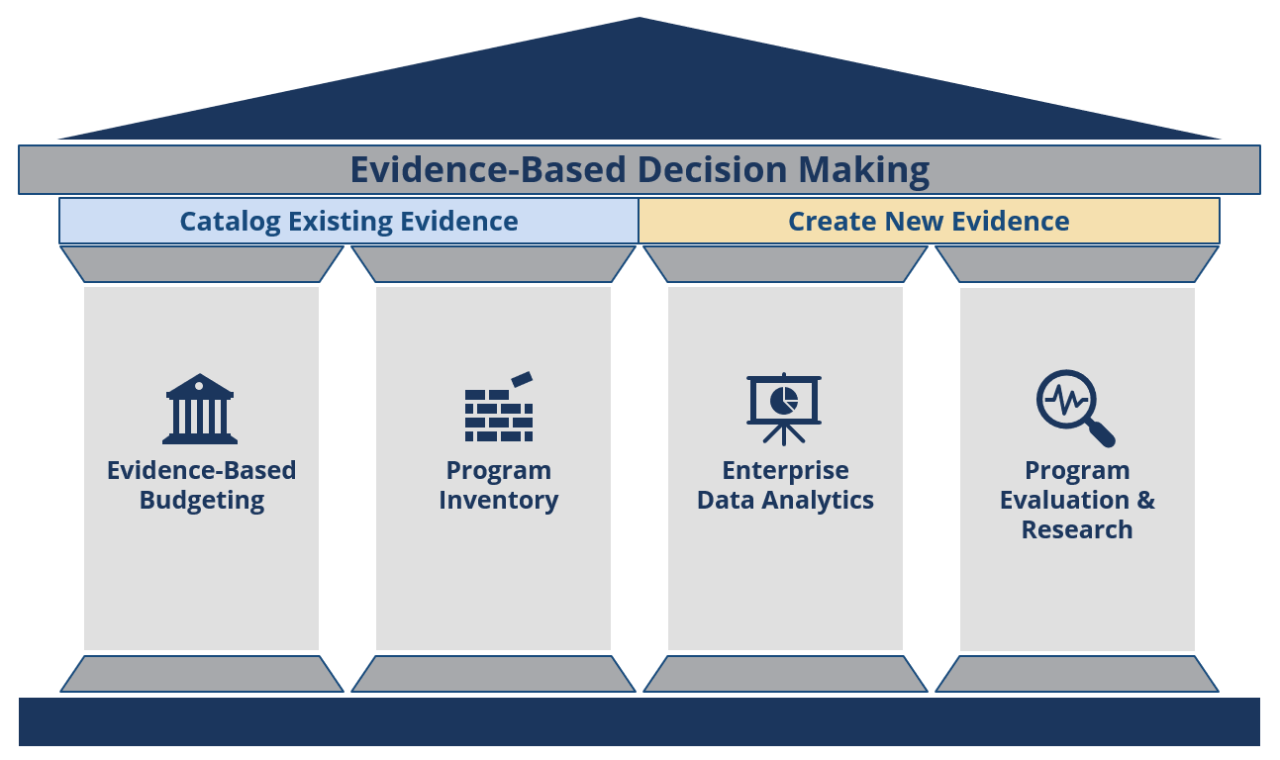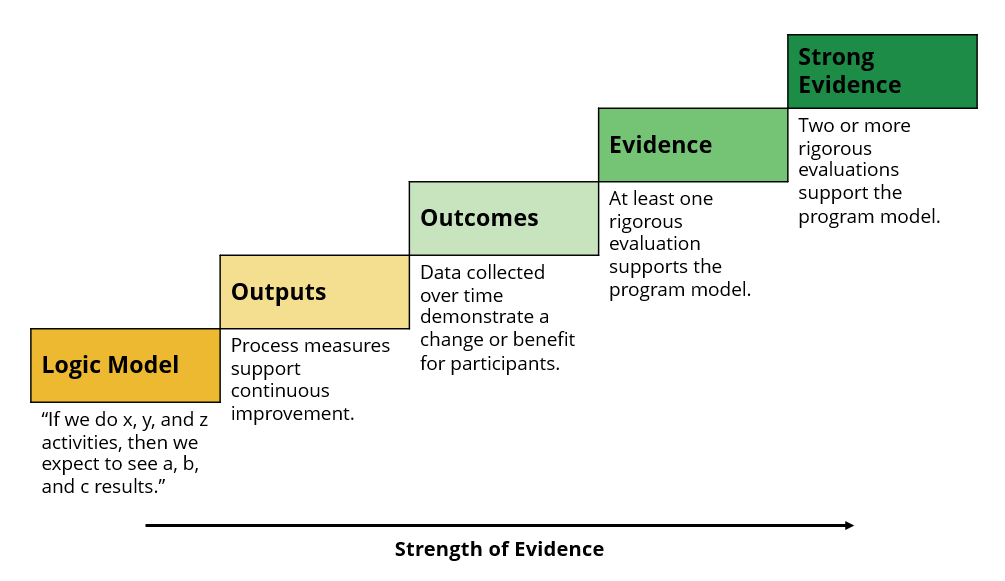About OEI
To promote this culture of evidence use across the enterprise, OEI works to catalog existing evidence and create new evidence through four key efforts: evidence-based budgeting, program inventory, enterprise data analytics, and program evaluation & research. Within all these areas, most of the work centers on programs administered by cabinet-level agencies. An iterative cycle of learning, data collection, and analysis leads OEI and its partner agencies through identifying, collecting, using, and generating evidence for better decision making. Its mission and vision statements guide OEI’s work:
Explore the four pillars of OEI's work here:
Mission
Foster a culture of data and evidence-based policymaking and budgeting that pursues the best outcomes for Tennesseans.
Vision
Better information to empower decision making that serves every Tennessean.

The Tennessee Evidence Framework is designed to standardize the language that is used enterprise-wide to classify programs in Tennessee based on the level of available evidence supporting the program.
In this model, five evidence steps build from left to right. Every program has a logic model, or a theory of action, that guides its operation. Outputs are process measures, while outcomes communicate impact on participants or systems over time. The evidence and strong evidence steps indicate that the program is supported by at least one rigorous evaluation. Various factors can prevent a program from being rigorously evaluated, so ultimately the expectation is that all Tennessee programs are at least measuring outcomes.
Evidence is a rigorous body of research that demonstrates the effectiveness of existing programs or proposed pilots in Tennessee. To meet criteria for the Evidence and Strong Evidence steps in the Tennessee Evidence Framework, evaluations must be rigorous. “Rigorous” evaluations are impact evaluations that use comparison groups—where a group that receives the program or service, and group that doesn’t—to determine the effectiveness of a program or service on the desired outcomes. Randomized controlled trials (RCT) and quasi-experimental designs (QED) are evaluations that use comparison groups.
OEI encourages the use of clearinghouses and clearinghouse databases to find this type of evidence. These tools conduct systematic reviews to evaluate programs and determine their impact. Click the images below to access the National Results First Clearinghouse, which compiles research from several clearinghouses into one central location, or the Washington State Institute for Public Policy (WSIPP)'s benefit-cost analysis. Or, download OEI's list of Evidence-Based Clearinghouses.
Some tools and resources OEI offers span the breadth of our work, containing elements of cataloging existing evidence and creating new evidence. Those resources are available here.
The New Program Toolkit is designed to support agency program teams with the planning or beginning stages of new or pilot programs. This interactive document guides program leaders through stages such as assessing need, developing a theory of action and program metrics, and considering future evaluation opportunities. Download the workbook with the link below.
